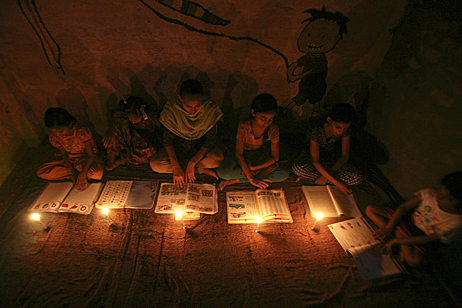
ICTpost Media Action
Community radio acts as a vehicle for the community and voluntary sector, civil society, agencies, NGOs and citizens to work in partnership to further community development aims, in addition to broadcasting. There is legally defined community radio (as a distinct broadcasting sector) in many countries, such as France, Argentina, South Africa, Australia and Ireland. Much of the legislation has included phrases such as “social benefit”, “social objectives” and “social gain” as part of the definition. Here are some best examples of community radio in India:
Swara Platform and Network Swara IVR
Swara is a technology platform that enables real-time feedback from the grassroots regarding administrative schemes and other areas of governance and democracy. It has been successfully piloted since 2010 in Chhattisgarh and other parts of Central India. ?The CGNet Swara pilot (http://cgnetswara.org, 08041137280) receives between 300-400 calls a day from user base of over 23000 people.
Swara Platform and Network Swara IVR is an effective bridge between the poorest sections of society in remote areas and administration and concerned citizens in cities.
Reports transcribed and moderated by trained volunteers, before they are forwarded to the web. Once the messages are released, listeners are encouraged to provide whatever assistance they can to the contributor. This could be as simple as showing solidarity or more tangible, such as following up directly with the administration. The Swara tech team has focused on making the technology simple and cheap and the platform is now being deployed by communities and nonprofits, both in the country as well as in other parts of the developing world (e.g. Indonesia and Ahghanistan)
Swara enables the creation of voice-portals, accessible over phone via an Interactive Voice Response system as well as the web. Users can either record content or listen to content released by the administrators. Administrators can transcribe and publish a message as well as forward it to social media. Statistics regarding user behavior and call data can also be extracted from the system. The hardware required is a computing unit (laptop/desktop) and a GSM interface (can be a voice enabled USB modem). The platform is free and open source software, available from http://swara.mojolab.org
Kissan Vani, Sironj: Community Radio Station
The Indian Society of Agribusiness Professionals (ISAP), a non-profit organization has established a Community Radio Station at Sironj in District Vidisha of Madhya Pradesh. Broadcast from this radio station covers information required by the farmers like advisory on plant-protection, irrigation, INM, market prices of agriculture commodities. ?Kisan Vani is reaching to the community members of surrounding 350 villages.
Using CRS for agriculture extension is an innovative step. There is huge dearth of extension professionals and this gap can only be bridged through such innovative application of ICT. People in this region look forward to information on agriculture techniques, as majority listeners of Kisanvani CRS are engaged in farming. People have also shown their likings for folk-program being aired through Kisanvani CRS.
Broadcast from this radio station reaches out to the farmers of ?Sironj, Lateri & Shamsahbad tehsil of Vidisha district and surrounding villages in the range of nearly 25-30 km around it. Broadcast covers whole gamut of information required by the farmers like advisory on plant-protection, irrigation, INM, market prices of agriculture commodities etc.
Phone in Program ISAP also runs a Kisan Call Centre (KCC), which is located in Bhopal. Radio is an excellent medium to share solution of any problem of the farmers which is provided by the KCC expert. Thus, solution reaches to other farmers in the region, who are facing the similar problem. Farm Extension Services Scientists or other agriculture experts, who find it difficult to reach the farmers individually very often, use KisanVani for dissemination of useful and scientific information for the farmers.
Seedhi Baat (Radio Programme)
Seedhi Baat is an interactive program aired in Henvalvani Samudayik Radio between 3-3:30pm daily. The program seeks to provide an open platform where the community members from the Garhwal region can raise any issue. The low cost broadcasting software GRINS has made it easy to facilitate the participation of people in the program.
The program provides access to a platform which can be accessed by many people of the same region simultaneously. This helps the people to raise and bring forward issues which are of local relevance. This in turn helps reverse the information flow thereby bringing the voice of the communities which were marginalized by the mainstream media. The people from the community have used the interactive feature of the program to raise many issues which affect their lives.
There are multiple ways in which people connect in the program. For example they use the call feature or messaging facility to communicate with the community. This includes issues like providing local information, expressing frustration about the unavailability of government services or apathy of the officials.
The program is heavily reliant on the fact that mobile technology with FM facility and cheap call rates is easily available to large section of the population. The frustration of people for the lack of a media for voicing their concerns helped emerge an idea for a highly interactive program. It has been widely accepted by the community members and the program has also helped generate resources like experts, content and ideas for other programs in the station.
If one looks at the impact of the program, it covers the 5 districts of Garhwal region which are Tehri- Garhwal, PauriGarhwal, UttarKashi, Dehradun and Haridwar where Henvalvni can be heard. This area has an approximate population of 1, 40,000 who can access the radio station and the program Seedhi Baat. The program has received around 4800 callers who have called multiple times in the program. These people have availed the benefit of access to the platform to discuss a host of issues. When an issue is raised and discussed in the program it also further helps in educating the public about the same.
The participation in the different processes of the region has made people face the harsh reality of unavailability of access to a platform where the voices of masses could be heard. While the mainstream media largely focused on the urban population, the voices of the people in the marginalized regions were left unheard. This led to the realization of the importance of access to a media platform for the local voices. It was to bridge this gap of access to a platform and sources of information that the program Seedhi Baat was born.
editor@ictpost.com







